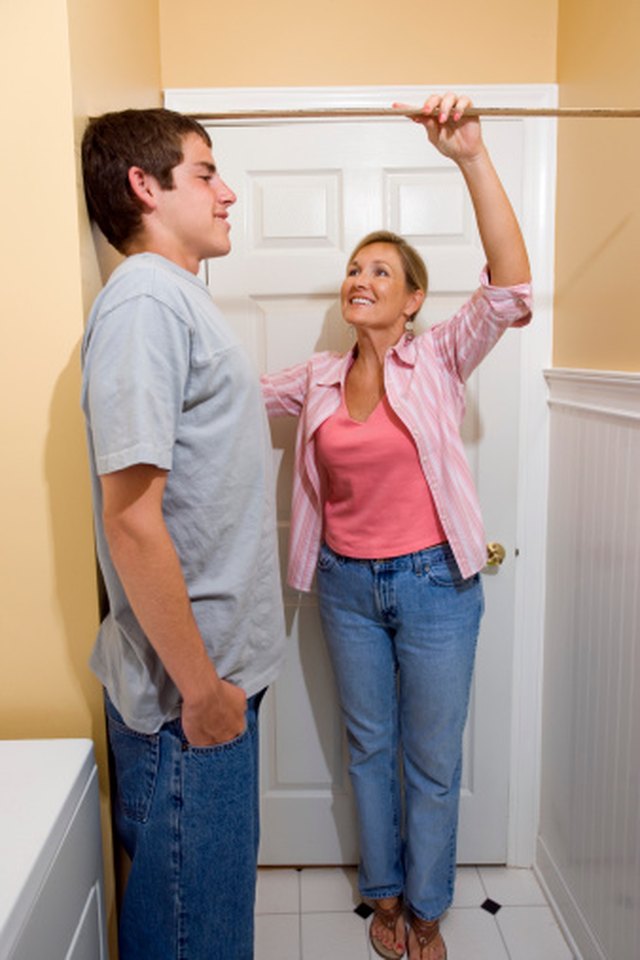How to Measure Leg-to-Body Ratio

The leg-to-body (LTB) ratio often is used to assess nutritional health and development, especially in children. Longer leg lengths are associated with a better health outlook, including a reduced risk of cancer, diabetes and heart disease and lower blood pressure and lower adult mortality. From a purely aesthetic perspective, this measurement is used to determine the attractiveness of both men and women, with the preference generally being for proportionately longer legs. Determining a leg-to-body ratio is something you can easily do at home.
Have the person who is being measured remove his or her shoes and stand straight against a wall. Measure the person's height from the floor to the top of his or her head. Record the height.
Have the person sit in a chair. Measure the person's torso, from the top of his or her head to the top of the chair seat on which the person is sitting. This measurement is the torso length.
Subtract the person's torso length from his or her total height. This measurement is his or her leg length.
Write your leg and torso measurements in the form of a ratio. For example, if your torso is 30 inches long and your legs are 40 inches long, then your leg-to-body ratio is 30:40.
Reduce the ratio to the lowest term. In this case, divide both numbers by 10 to get a simplified ratio of 3:4.
Tips
To make measuring the person's height easier, place a book on top of his or her head. The height of the top of the person's head is the same as the height of the bottom of the book.
References
Writer Bio
Andrea Chrysanthou began writing professionally in 1993. Her work has been published internationally by "The Cyprus Mail," MochaSofa and My Favorite Trainer, among other magazines and websites. She holds a Bachelor of Applied Arts in journalism from Ryerson University. Chrysanthou is a certified fitness instructor and personal-training specialist with more than 10 years of experience in the fitness industry.
